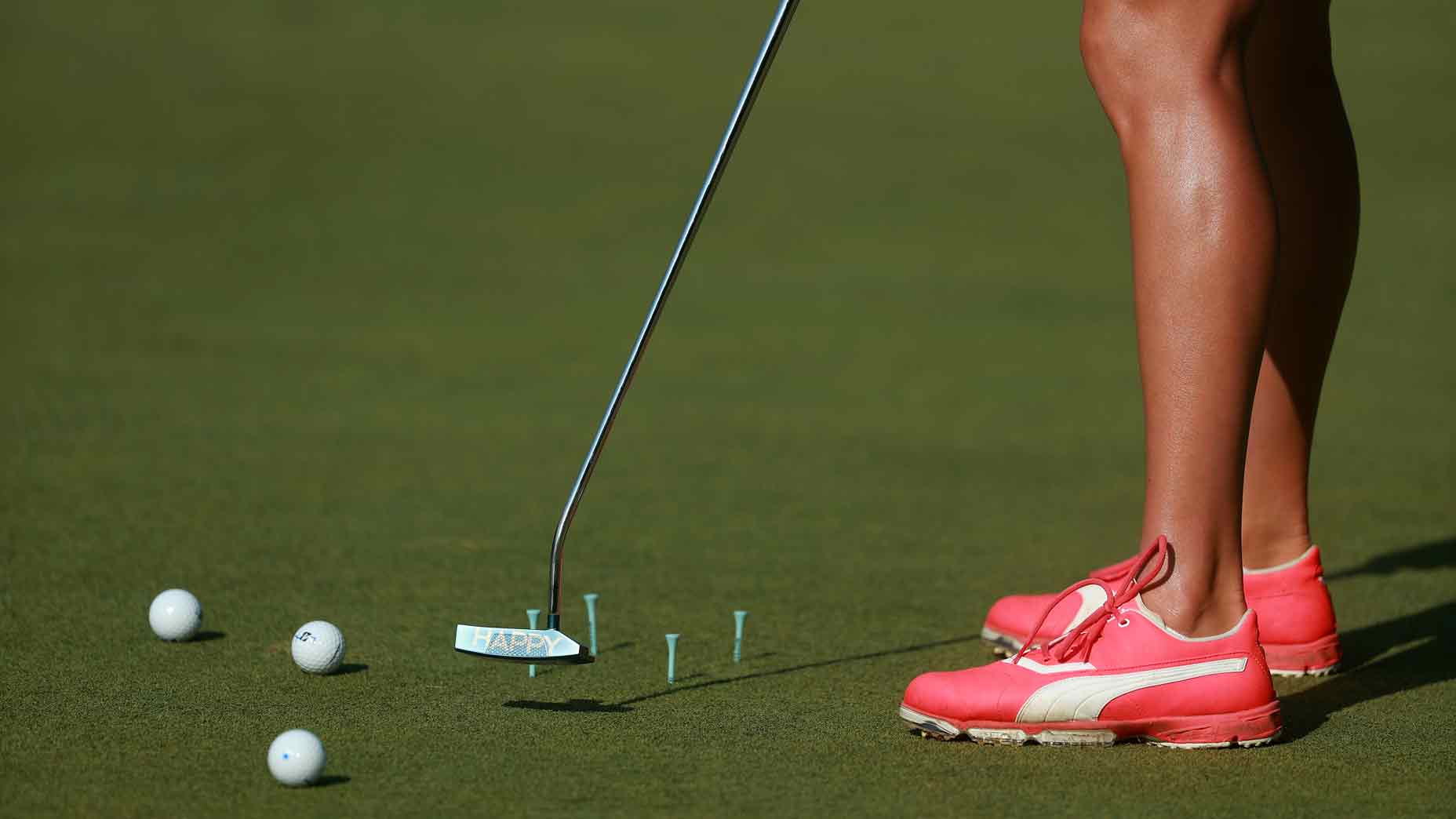
Try these putting drills for improved play and more confidence in your stroke!
Getty Images
The quickest way to lower golf scores is by becoming a better putter. To do this, it’s going to take some practice to find your stroke and gain some confidence. This is where an understanding of some putting drills can make an impact, which can help turn you into a sniper with the flatstick in your hand.
Since I always get asked about my favorite putting drills, I’ve decided to list them below. You need to set up well, aim your putter face well, and get great at making your shorter putts — within the 3-4 foot range. The first three practice techniques are specific to this. Once you can make your short putts, you need to be great at distance control. Drills 4-10 below address that aspect.
All of our market picks are independently selected and curated by the editorial team.
If you buy a linked product,
GOLF.COM may earn a fee. Pricing may vary.
1. Putt next to an alignment stick
This might be one of the more simple practice techniques, but it will reap huge rewards.
Take your alignment stick (or one of your own clubs if you don’t have the former) and place it so that it points to the outside of the hole, with the end touching the side of the cup. You will putt right next to this alignment aid, so make sure that the ball is on the side of the aid that you’re standing.
Practice making small strokes that don’t touch the alignment rod. By doing this, you’ll be able to check to see if the ball is rolling straight off the putter face and into the hole. This is really helpful to practice on straighter putts.
2. The chalk line
No question, the chalk line is one of my favorite training aids — and it’s one of the easiest putting drills.
Simply find a straight putt and snap a chalk line on the green — regardless of whether it’s a short or longer putt. Align both your feet and the putter’s clubface, making sure the ball rolls well down the chalk line.
Practice until you feel confident and start to see more shots drop into the hole.
3. Alignment ball
One of my new favorite training aids is the alignment ball.
Not only does it help with your putter’s clubface alignment, but it’s also dynamic enough to help with other parts of your game as well. Plus, it’s portable, so it’s easy to carry with you for each round.
4. 3-foot increment drill
The fastest way to avoid three-putting is by learning how to control your distance. Distance should be controlled by changing your backstroke length, with your stroke being relatively equal back and through.
To practice this drill, set balls at three-foot increments (one big step) moving away from the cup. Start with the shortest putt and work your way back. Your goal is to control distance and have your ball end up close to the hole.
As you increase distance, the size of your backstroke should also slightly increase. The ability to make minor stroke changes is how you’ll gain more confidence and start controlling your speed on the greens.
5. Two-putt or better, seven times in a row
Pick two holes on your practice green that are 20-30 feet apart. Take one ball, and putt back-and-forth between the two cups.
Now, give yourself the goal of making 2-putt or better. For example, make sure to two-putt or better seven times in a row.
As you get good at this drill, increase the difficulty of the putt or the number of times you need to two-putt or better. Ultimately, you should be able to two-putt or better 18 times in a row.
6. 5-foot circle
This drill will help you learn to adjust your aim as you move around the hole, giving you the ability to read greens more effectively.
To practice, place eight golf balls in a 5-foot diameter around the cup. Putt each ball, and notice how the break changes as you move around the circle.
As you move to hit each ball, you should become more aware of the green’s tilt in your feet. This is how you’re reading the green, and should help you react as you line up for each putt.
Your goal is to make each putt on the first try, completing the full circle.
Another great way to improve your green-reading ability is by using the Golflogix putt line, which provides aim using tour-quality green data.
7. Draw back
Leaving your first putt close to the hole is critical in improving your scorecard. This means your second putt is typically within 2-3 feet — which is where you should become nearly automatic from in order to see better scores.
To help you accomplish that, try practicing the draw back drill.
If your first putt is within three feet of the cup, putt from there. If it’s not within that radius of the hole, move the ball back a full putter length as a penalty.
Treat each hole as a par 2, and keep your score relative to par, with the goal to improve over time.
8. Over par/under par
A more natural way to get putting practice is simply by playing 18 holes, and keeping your score relative to par. Treat each hole as a par 2 once you’re on the putting surface, with the goal of making par each time.
This allows you to work on putts from a variety of areas of the green, challenging yourself from different distances.
9. Match play
A fun (and natural) way to get better at putting is to simply challenge a friend to a game of match play.
Not only will this help you practice distance control and targeting 2-putts or less, but also the pressure will add an extra element.
Simply treat each putt as one point, and whoever has the least amount of points at the end of 18 holes is the winner.
10. Fringe to fringe
Learning to control speed should always be the priority of your warm up. Rather than always putting to a cup, it can be helpful to have a feel for the overall speed of the green by putting from one side of the green to the other — or from fringe to fringe.
Practice going back and forth to see how close you can get to the edge of the green with each shot. This will help you focus specifically on distance control, and not have you worry about the aim or break of the green.








